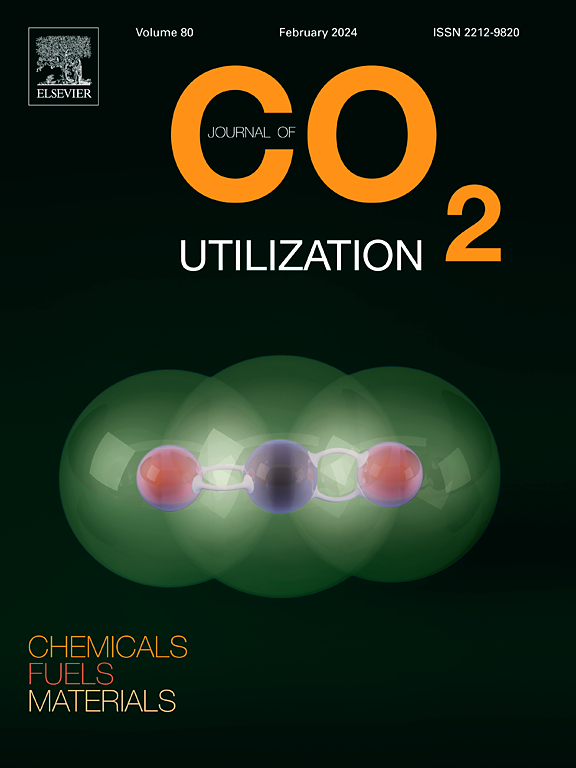Improvement of the dissolution of the antineoplastic drug regorafenib through impregnation into pullulan polysaccharide using supercritical fluid technology: Optimization of the process
IF 8.4
2区 工程技术
Q1 CHEMISTRY, MULTIDISCIPLINARY
引用次数: 0
Abstract
Regorafenib is administered orally for the treatment of metastatic colorectal cancer. However, its limited water solubility hinders its clinical efficacy. This study explores the impregnation of regorafenib monohydrate (REG MH) into pullulan (PULL) using supercritical carbon dioxide (scCO2), aiming to promote the oral bioavailability, water solubility and therapeutic efficacy of the drug. Pullulan was first produced by Aureobasidium pullulans. A Box-Behnken design (BBD) was employed to optimize impregnation factors including temperature (308, 318 and 328 K), pressure (200, 240 and 280 bar) and time (5, 7 and 9 h) on drug loading. The maximum drug loading (0.57 %) was achieved at a temperature of 280 K, pressure of 328 bar and time of 7 h. The highest drug loading of 0.7 % was predicted by BBD under optimal conditions of 328 K, 280 bar, and 9 h. The crystalline peaks for REG MH were lost after incorporation into the pullulan proving the amorphization of the embedded drug. According to differential scanning calorimetry (DSC) results, the melting point belonging to the crystalline drug faded after impregnation into the polymer, implying that the REG MH/PULL formulation converts to a complete amorphous structure. Field emission scanning electron microscopy (FE-SEM) images indicated the semi-spherical morphology of the REG MH/PULL system. The dissolution rate of the impregnated REG MH in an aqueous medium considerably enhanced to 80 % during 60 h, whereas it reached 18 % for the free drug. The drug release from the polymer matrix is predominantly controlled by the Fickian diffusion mechanism.
超临界流体浸渍法提高抗肿瘤药物瑞非尼在普鲁兰多糖中的溶出度:工艺的优化
瑞非尼口服治疗转移性结直肠癌。但其水溶性有限,影响了其临床疗效。本研究利用超临界二氧化碳(scCO2)将雷戈非尼一水合物(REG MH)浸渍至普鲁兰(PULL)中,以提高药物的口服生物利用度、水溶性和治疗效果。普鲁兰最早是由普鲁兰小孢子草(auobasidium pululans)产生的。采用Box-Behnken设计(BBD)优化浸渍温度(308、318和328 K)、压力(200、240和280 bar)和时间(5、7和9 h)对载药效果的影响。温度为280 K,压力为328 bar,时间为7 h时,载药量最大(0.57 %)。在328 K, 280 bar, 9 h的最佳条件下,BBD预测最高载药量为0.7 %。REG MH加入普鲁兰后结晶峰消失,证明包埋药物非晶化。差示扫描量热(DSC)结果表明,浸渍入聚合物后,属于结晶药物的熔点逐渐消失,表明REG MH/PULL配方转变为完整的非晶态结构。场发射扫描电镜(FE-SEM)显示了REG MH/PULL体系的半球形形貌。浸渍的REG MH在水介质中的溶出率在60 h内显著提高到80 %,而游离药物的溶出率为18 %。药物从聚合物基质中的释放主要受菲克扩散机制控制。
本文章由计算机程序翻译,如有差异,请以英文原文为准。
求助全文
约1分钟内获得全文
求助全文
来源期刊

Journal of CO2 Utilization
CHEMISTRY, MULTIDISCIPLINARY-ENGINEERING, CHEMICAL
CiteScore
13.90
自引率
10.40%
发文量
406
审稿时长
2.8 months
期刊介绍:
The Journal of CO2 Utilization offers a single, multi-disciplinary, scholarly platform for the exchange of novel research in the field of CO2 re-use for scientists and engineers in chemicals, fuels and materials.
The emphasis is on the dissemination of leading-edge research from basic science to the development of new processes, technologies and applications.
The Journal of CO2 Utilization publishes original peer-reviewed research papers, reviews, and short communications, including experimental and theoretical work, and analytical models and simulations.
 求助内容:
求助内容: 应助结果提醒方式:
应助结果提醒方式:


